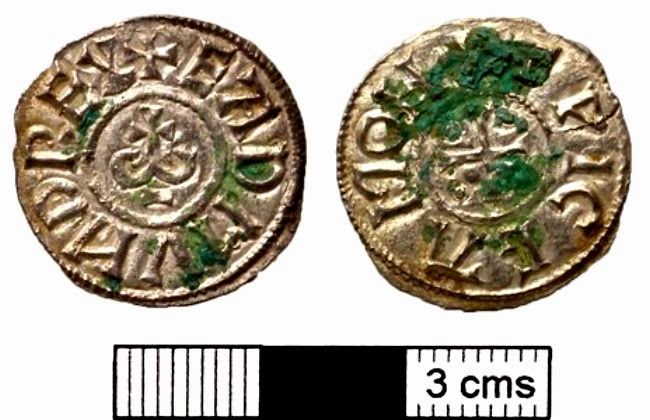
artefacts in 2013 [Credit: Jay Williams]
Last year, close to 1,000 objects classed as treasure were recorded, with a further 73,903 finds recorded.
Many of the objects were found by enthusiasts using metal detectors in fields around the country.
Over the past 15 years, under the Portable Antiquities Scheme, more than 920,000 archaeological finds have been recorded. During the same period 8,500 finds have been reported as treasure, which means the objects include gold or silver. It expects to announce its one millionth object recorded under the scheme later this year.
Neil MacGregor, the director of the British Museum, said the Portable Antiquities Scheme and Treasure Act has "revolutionised archaeology, ensuring that finds found by ordinary members of the public are rewriting history”.

were buried when Vikings attacked Britain in 865 [Credit: BBC]
Among the most celebrated finds in 2012, the most recent report, was a rare Anglo-Saxon hoard of silver jewellery and coins, dating to 9AD, found in Norfolk.
The hoard includes 23 silver pennies minted in the name of Edmund, King of the East Angles, and four silver brooches.
Tim Pestell, senior curator of archaeology at Norwich Castle Museum, said: “This find is really exciting. It’s one of two Edmund penny hoards.”
Little is known about the reign of Edmund, who would be venerated as St Edmund, beyond his death in the Anglo-Saxon Chronicle. He was captured by the Vikings during a raiding party, tied to a tree and shot with arrows before being decapitated.

hold oil and originated in France [Credit: BBC]
According to legend his severed head was guarded by a wolf and called out to those who sought to bury it with his body.
Other treasures highlighted included a find of Roman silver jewellery and coins from Knutsford in Cheshire dating to the 2nd century. Experts said it was likely to have been buried for safety but did not know why the owners never returned for it.
Another Roman object, the balsamarium, which was dug up in Kent, was believed to hold oil and decorated with figures playing music. Craig Bowen, collections and research manager at Museum of Canterbury, said: “There’s only three or four found in Britain.”
Three friends out metal detecting discovered a well preserved jug from 1635. Stuart McLeod said the find of the item called a ewer was “a complete shock”. They initially thought it was a pipe before realising its value.
Author: Nick Clark | Source: Independent [January 16, 2014]